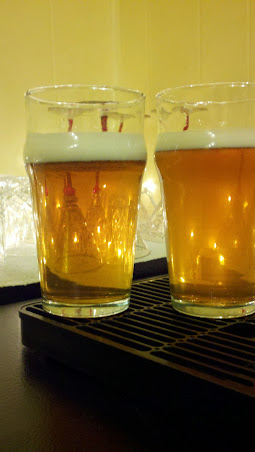Scooby_Brew
Well-Known Member
I just wanted to share with you guys my system for priming, dry-hopping and using gelatin in kegs.
Priming in a keg: I use flat 1/3 of a cup = 2.5 oz. = 70g of table sugar (not priming sugar) per keg.
Dry hopping in a keg: use whole hops only (pellets don't work in a keg), in a large 5 gal HD nylon paint strainer bag, straight in the keg, let it float on top of the beer. Use about half the amount of hops you would use in dry-hopping in a secondary.
Using gelatin in a keg: 1/2 a packet of gelatin in warm water into the keg.
I do all of these three things at the kegging time, let it carb for 2-3 weeks
This system has been working great for me, my beers are clear and hoppy, ready for me to use at any time.
:rockin:

Priming in a keg: I use flat 1/3 of a cup = 2.5 oz. = 70g of table sugar (not priming sugar) per keg.
Dry hopping in a keg: use whole hops only (pellets don't work in a keg), in a large 5 gal HD nylon paint strainer bag, straight in the keg, let it float on top of the beer. Use about half the amount of hops you would use in dry-hopping in a secondary.
Using gelatin in a keg: 1/2 a packet of gelatin in warm water into the keg.
I do all of these three things at the kegging time, let it carb for 2-3 weeks
This system has been working great for me, my beers are clear and hoppy, ready for me to use at any time.
:rockin:



